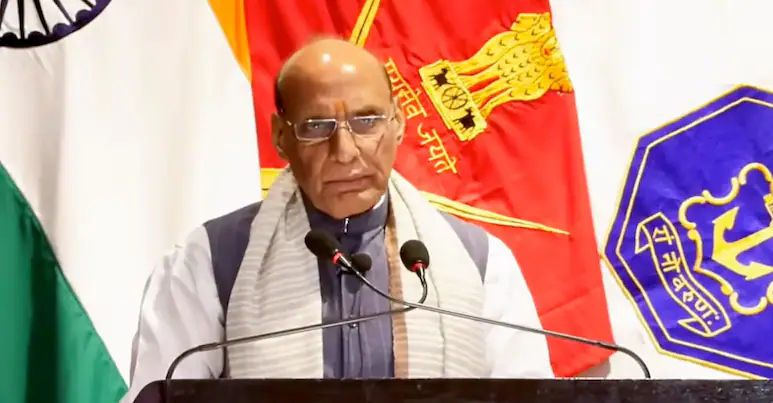India Emphasizes Peace, Preparedness, and Strength: Rajnath Singh at Ran-Samwad 2025
- MGMMTeam

- Aug 27
- 3 min read
At the Ran-Samwad 2025 Tri-Service Seminar held at the Army War College in Mhow, Defence Minister Rajnath Singh reiterated India’s steadfast commitment to peace. Speaking to a gathering of military leaders and strategists, Singh emphasized that India has never sought war nor initiated aggression against any nation. “Even though we do not harbour any aggressive intent, if someone challenges us, it becomes imperative that we respond with strength,” he said. His remarks highlighted the delicate balance between maintaining peaceful intentions and safeguarding the nation’s sovereignty.
This stance reflects India's long-standing policy of peace through strength, ensuring that the country remains vigilant and capable of responding decisively to any external threats.

Bridging Battle and Dialogue: The Philosophy of Ran-Samwad
Singh drew attention to the seminar’s evocative title, merging "Ran" (battle) with "Samvad" (dialogue). Inspired by the Mahabharata, he noted that the apparent contradiction symbolizes a larger truth: strength and dialogue are not mutually exclusive. Instead, they coexist to ensure both strategic preparedness and diplomatic engagement. By highlighting this, Singh stressed the importance of measured responses underpinned by national resolve.
Modern Warfare: Beyond Traditional Boundaries
Addressing the changing nature of warfare, Singh pointed out that future conflicts extend beyond traditional frontlines to domains such as cyberspace, outer space, and technological arenas. He explained that modern conflicts can range from short-duration skirmishes to prolonged engagements spanning several years. The unpredictable and complex nature of contemporary warfare necessitates preparedness across both military and civilian sectors. Singh underscored that the entire nation must play a role in defense readiness, ensuring a cohesive and resilient national defense posture.
Strengthening Indigenous Defense Capabilities
Singh also highlighted India’s progress in developing indigenous defense technologies, particularly in the aerospace sector. He noted that India is actively working on fifth-generation fighter aircraft and advanced jet engines, aligning with the Atmanirbhar Bharat initiative aimed at self-reliance in defense. By investing in domestic manufacturing capabilities, India reduces its dependence on foreign imports while building a technologically advanced and resilient armed forces.
The Role of Technology, Strategy, and Adaptability
Singh emphasized that future warfare requires mastery over a “triangle of technology, strategy, and adaptability.” This involves leveraging artificial intelligence, cyber capabilities, unmanned systems, and satellite-based intelligence. According to him, nations that successfully integrate these dimensions into their defense planning will emerge as global powers. The Indian Armed Forces are actively pursuing this multidimensional approach to ensure rapid, precise, and effective responses in modern conflict scenarios.
Vision for a Future-Ready Military
Looking ahead, Singh outlined a vision for India’s armed forces to be joint, technologically advanced, self-reliant, and agile by 2035. This includes establishing operational theatre commands, strengthening indigenous supply chains, and integrating cyber-space operations. Singh’s vision emphasizes coordination between different branches of the military and ensures that India remains prepared to counter any emerging threats swiftly and efficiently.
Conclusion
The Ran-Samwad 2025 seminar provided a platform for examining the future of warfare and the evolving defense landscape. Rajnath Singh’s address reaffirmed India’s commitment to peace while underscoring the necessity of strength, preparedness, and technological innovation. By focusing on indigenous capabilities, multi-domain readiness, and national cohesion, India aims to fortify its defense posture and secure its sovereignty in an increasingly complex global environment.
(Sources: NDTV, Economic Times, Times of India)




Comments